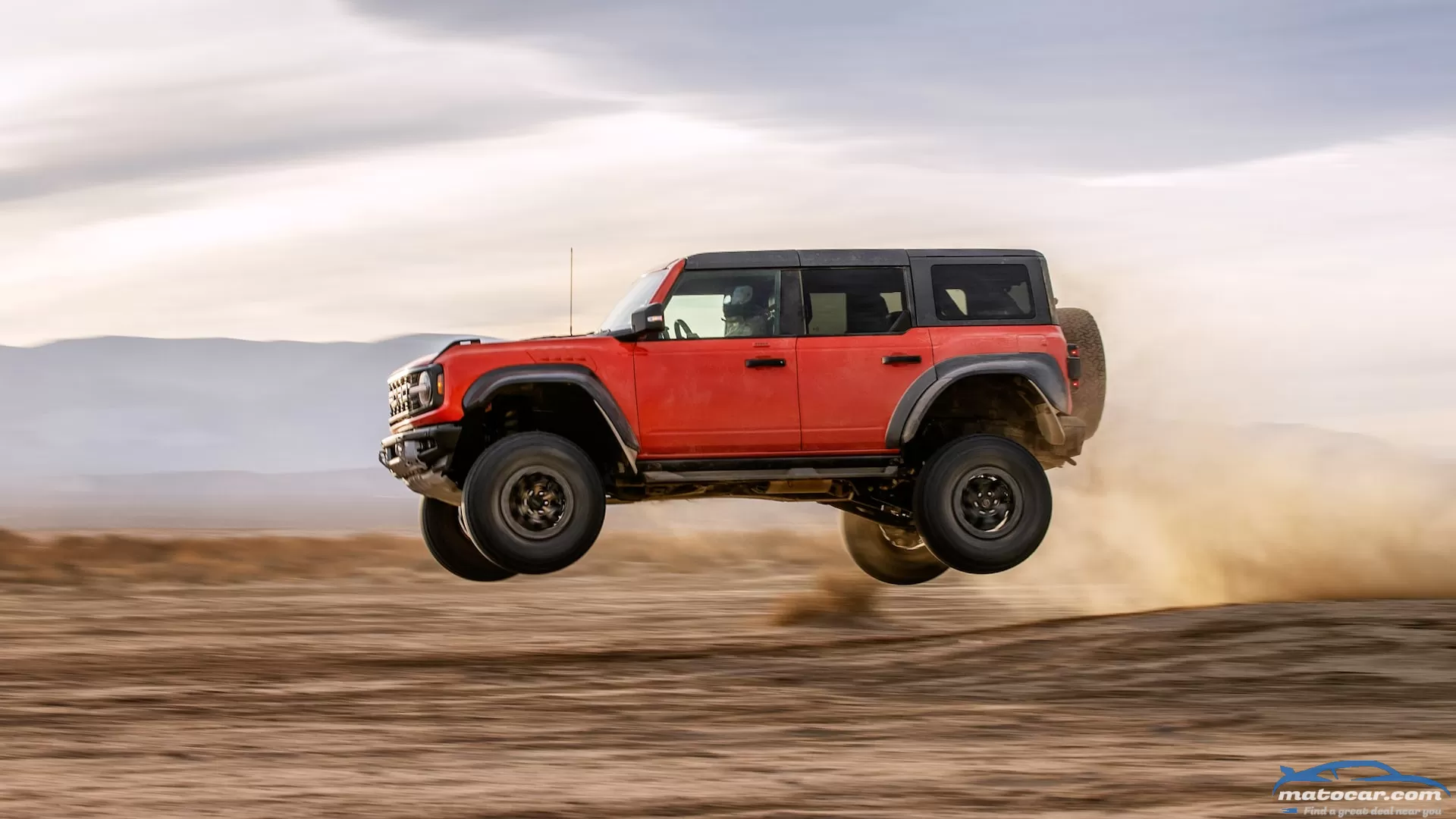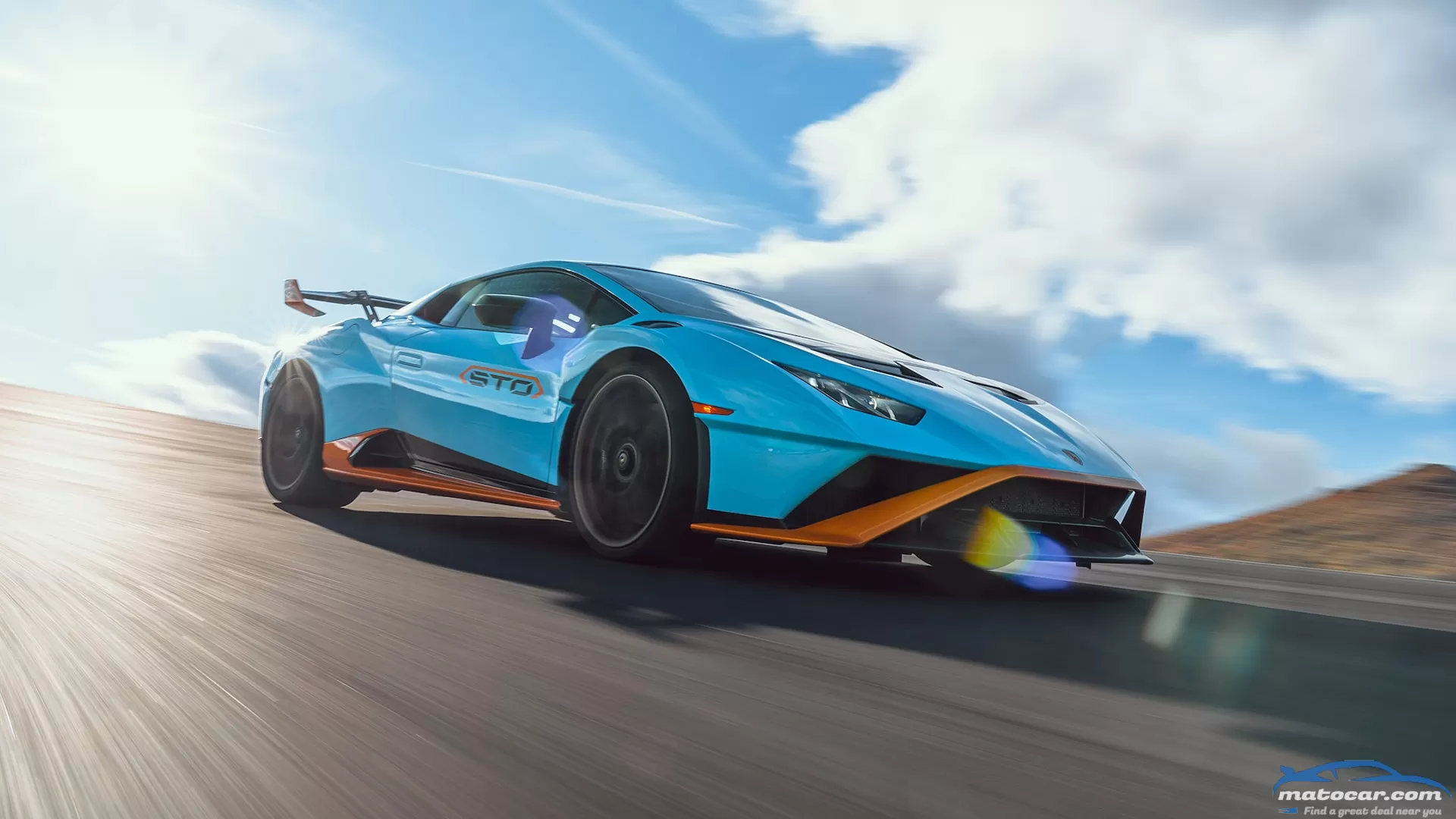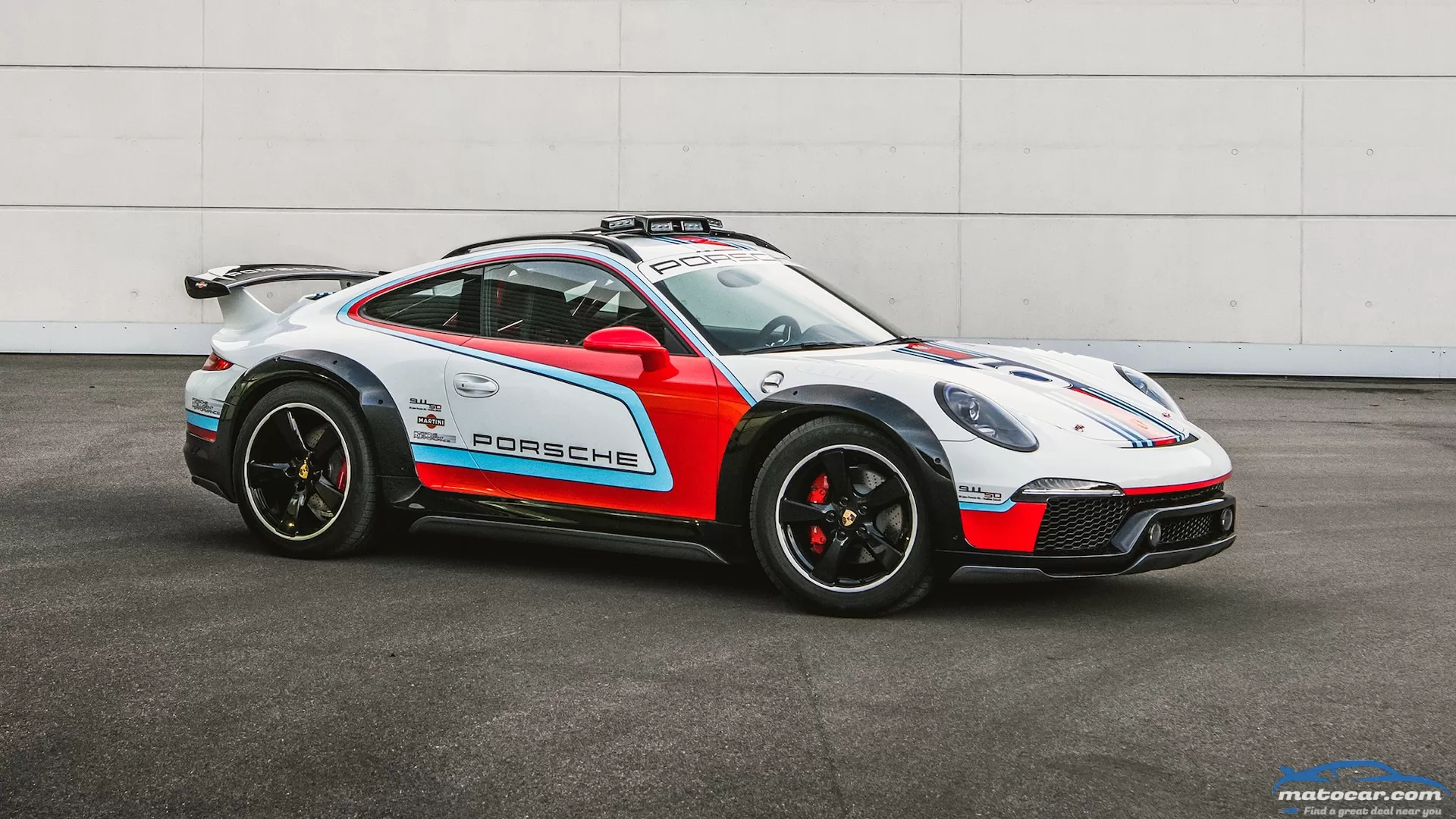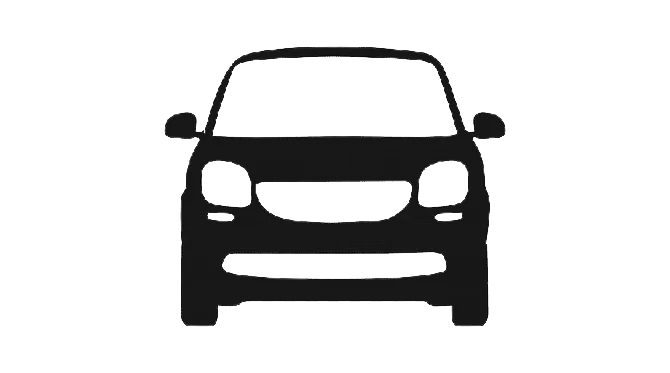2022 Ford Bronco Raptor First Look: Does It Live Up to Its Name?

Drum roll, please: The Blue Oval has put two of our favorite words together—Bronco and Raptor—and finally coughed up details we have pined for regarding the 2022 Ford Bronco Raptor.
No one on the planet should be surprised that a Bronco Raptor has been in the works, but we now know when it is coming, its price, details about its doors and roof, and most important what will be under the hood. And yes, the official name is Bronco Raptor—"Warthog" was the winning code name for the project from an internal competition and was never meant for use outside Ford's halls.
Essential Hardware
Here's the big news: The 2022 Ford Bronco Raptor comes one way, with four doors, a removable hard top, 37-inch tires, and a version of the 3.0-liter twin-turbo V-6 found in the Explorer ST. Ford promises it will deliver more than 400 horsepower, but the exact number, as well as torque specs, have not been finalized. (Why no V-8? Read more here.)
Ford Performance got its hands on the 3.0-liter EcoBoost engine and started customizing it to meet the requirements of the 2022 Bronco Raptor. The SUV needed to excel at high speeds on- and off-road, as well as at extremely low rock-crawling speeds. Engineers worked to increase the amount of air moving in and out of the engine, reducing induction losses, and incorporating low-pressure ducts, a new exhaust, and even a simplified muffler. The goal was to increase horsepower at a higher rpm so you can keep your foot to the floor all the way to the redline and not fall off a cliff when you reach it. The Ford Bronco Raptor also uses the company's 10-speed automatic transmission.
This much-hyped SUV is essentially a Ford Ranger Raptor under a well-equipped Bronco. The Raptor treatment made it 9.8 inches wider and 3.0 inches taller, with 13.1 inches of ground clearance riding on standard BF Goodrich 37-inch K02 all-terrain tires. Its minimum running ground clearance is 13.1 inches, or 1.6 inches higher than the Bronco Badlands Sasquatch. Inspired by the Ultra4 race series, this Bronco has a Raptor HOSS 4.0 race-ready suspension system and fully boxed frame with new shock towers. Maximum wheel travel is 13.0 inches in front and 14.0 inches at the rear.
How Much Does the 2022 Ford Bronco Raptor Cost?
The 2022 Ford Bronco Raptor's starting price is $69,995, and Ford will begin accepting orders in March ahead of deliveries this summer.
This tasty treat rounds out a growing Bronco family that first broke cover with the Bronco R teaser that raced in the SCORE Baja 1000 in 2020, followed by the mainstream production 2021 Bronco that went on sale last year. Next we saw the $250,000 2023 Bronco DR (for Desert Ready), a turnkey off-road-only racer coming later this year with plans to make only 50 examples with a Coyote 5.0-liter V-8. Now we have the much-anticipated street-legal Bronco Raptor.
But don't hold your breath for a street-legal fire-breathing Bronco with a V-8: Ford thinks the twin-turbo V-6 is just right, and the powerplant has the added advantage of actually fitting inside the Bronco Raptor's engine bay.
The latest Bronco also rounds out the Raptor family that began with the Ford F-150 Raptor and includes a Ford Ranger Raptor in other parts of the world. The Bronco family shares the Ranger platform.
Raptor Was a Late Addition
The Raptor model was not a given from the start of the Bronco program. Bronco design manager Ryan Olsson was called in about three months after the main Bronco program wrapped up—about 2.5 years ago—to start formally sketching a Raptor version. Talk of a Bronco Raptor had been around for a while, but the project first needed a feasibility study. For Olsson, getting the go-ahead to put pencil to paper meant revisiting old ideas and wish lists. "We were able to do things we wanted to do with the base Bronco and couldn't," he said.
Marching orders: nothing superfluous. Everything had to make the 2022 Ford Bronco Raptor faster and more capable. The design task was to beautify the engineering for a Bronco ready to conquer the SCORE Baja 1000 and the Ultra4 King of the Hammers off-road races. The credo: "boundless and badass."
"We poured all of our passion and all of our Bronco and Raptor know-how into creating this absolute desert-racing beast," Ford president and CEO Jim Farley said in a release. "It's the real deal. It's not for show and it's not for everybody. But for people who love to get out in the wild, it's the ultimate."
Two-Door Bronco Raptor Never in the Cards
From the start, the 2022 Ford Bronco Raptor was to be four-door only—a two-door with a shorter wheelbase was never in the plans and still isn't.
The roof inspired a bit more debate. For structural integrity when flying over desert whoopties, there was talk of a fixed roof. But it went against the "wild and kicking" outdoor Bronco spirit. Say hello to a removable hard top rather than a soft top; the latter was considered, but a removable hard top does a better job of keeping out dust and dirt, and it provides a quieter on-road experience with NVH liners mounted inside.
To reinforce the 2022 Ford Bronco Raptor when desert racing, there are two additional crossbars that span the width of the vehicle, contributing to a Raptor with a torsional-rigidity increase of more than 50 percent compared to a standard Bronco four-door model. The aluminum B-bow is carefully placed to ensure helmet clearance and to not impinge on the open-air experience. The C-pillar reinforcement uses a carbon-fiber center section to reduce weight. Also required was additional Fox damping compared to the F-150 Raptor, due to the Bronco's shorter wheelbase. The result offers similar suspension travel, the same brakes, and much of the same tech, said Ford Performance chief engineer Carl Widmann.
Spotting the 2022 Ford Bronco Raptor
The 2022 Ford Bronco Raptor is recognizable thanks to its amber LED lighting and a domed hood specific to the Raptor. The unique grille doubles the air flow into the engine compartment, and extra louvers in the hood and fenders help extract this extra air. Wider fender flares cover the jumbo tires, special fender liners are designed to shed mud and ice, and stone-peck guards help protect the rear fenders from rocks kicked up by the front wheels. Wheel choices include 17-inch cast aluminum, a standard bead-lock-capable design, and an optional bead-lock wheel of forged aluminum.
Skidplates and bash plates have been upgraded, and engineers designed running boards that bolt directly to the rock rails. Fasteners for the latter are conveniently located above the mud line, eliminating the need to crawl under the truck. The idea came from watching would-be owners who had passengers who struggled to get into vehicles without running boards, as well as "sophisticate" buyers who want to avoid getting their clothes dirty.
Engineers also devised a unique rear quarter panel that accommodates the gas tank fuel door in the narrow remaining space. They also needed new taillights that extend further out so they can be seen on either side of the 37-inch spare tire on the back, as well as a new CHMSL (center high-mounted stop light).
Ripping Around the Desert in Style
Ford wanted higher-quality materials executed with better fit and finish for the Bronco Raptor. It is fitted with the High package as a starting point. (More on that shortly.) For a more upscale look, sewn vinyl wraps the top of the instrument panel, with leather seat bolsters and carbon-fiber trim, as well. Paddle shifters are made of magnesium.
The Bronco Raptor has specific seats made of a durable and washable microsuede to keep occupants from slipping, even with the additional bolstering. There are Code Orange seat belts and accents around the cabin that coordinate with the two interior color choices: Black Onyx and Rhapsody Blue. There are 10 standard exterior colors in the first model year.
In front of the driver is a 12.0-inch digital cluster; the base Bronco has an 8.0-inch cluster and analog gauges. The High package means the Raptor comes well-appointed with Sync 4, voice recognition, and heated seats. Moving up to the Lux package brings wireless charging, a heated steering wheel, a 10-speaker Bang & Olufsen sound system, and adaptive cruise control.
The SUV's true purpose is reinforced with grab handles on the dash and center console. And owners should scout around for Easter eggs.
Off-Road Primer
Toggle the steering wheel to engage My Mode for your preferred exhaust sound (possible with the active exhaust system), as well as steering and suspension settings. Meanwhile, the Performance View on the digital gauge cluster has a huge tach in the middle. All screens and graphics try to simplify the wealth of information available to help the off-road user and desert racer, with gear readings and graphics to show if a diff is locked, damper status, pitch and roll, and more. Ford research indicates 80 percent of buyers will take their 2022 Bronco Raptor off-road.
In fact, the Bronco Raptor starts with the six G.O.A.T. modes found on all Broncos—each accompanied by fun graphics—with a unique calibration for the Baja mode and the addition of a seventh mode: tow/haul, which allows the SUV to increase its towing capacity to 4,500 pounds, or 1,000 pounds more than the base Bronco's. A unique hitch and extra bracing contributed to the greater towing capacity so owners can bring their side-by-side ATVs to the off-road park.
Ultimately, the 2022 Ford Bronco Raptor is the halo for the Bronco lineup. Those are huge shoes to fill, and there will be many who will decry the lack of a V-8 engine option. But Ford engineers are unwavering in their belief their latest SUV lives up to both of its storied names.
2022 Ford Bronco Raptor Specifications
BASE PRICE $69,995 LAYOUT Front-engine, 4WD, 5-pass, 4-door SUV ENGINE 3.0L/430-hp (est)/420-lb-ft (est) twin-turbo direct-injected DOHC 24-valve V-6 TRANSMISSION 10-speed auto CURB WEIGHT 5,750 lb (mfr) WHEELBASE 116.5 in L x W x H 191.0 x 85.7 x 77.8 in 0-60 MPH 5.5 sec (MT est) EPA FUEL ECON (CITY/HWY/COMB) Not yet rated EPA RANGE (COMB) 333 miles (est) ON SALE Summer 2022 Show AllYou may also like
ProsNear limitless gripQuicker-than-you-can-think responsesBiblical brakes ConsConfusing drive modesNo performance auto-shifting modeNeeds a bigger shift lightIt's not often a car comes along where the only thing you can find to complain about are the names, functions, and number of drive modes, but here we are. The 2021 Lamborghini Huracán STO is so insanely good to drive, we're left with the nittiest nits to pick."You look at the STO and its wings 'n' things," deputy editor Alex Stoklosa said, "then consider that it's shoving a V-10's worth of power to only the rear wheels, and you assume it'll be hairier than a barbershop floor. Not at all. There is so much grip front and rear, and the chassis is so balanced, that it drives nothing like it looks. There is no evil here. Sure, the Lambo hustles in ways most cars don't or can't, but it simply has no vices while furiously raging."You could call it a complaint for lack of others, but the amount of time some judges felt they needed to fully understand the car's limits was a bit longer than usual, simply because the limits are so high you need a telescope to see them. Once you truly understand what it's capable of, though, you never want to stop driving it. On the street, on the track, it doesn't matter.Credit the brilliant blending of adaptive magnetorheological shock absorbers, rear steering, racing brakes, and Bridgestone Potenza Race tires for the STO's direct connection to your brain's pleasure center. The front end changes direction quicker than you can think it while the rear stays behind you no matter the speed unless you very deliberately kick it out. When you do, the car breaks away beautifully, allowing you to ride that slip into the perfect amount of rotation.Mostly, though, it just goes. The damn near race-spec V-10 delivers a perfect progressive powerband that never wallops the rear tires with more torque than they can handle (which is, admittedly, a lot), so you can stand on the throttle leaving every corner, and the STO will grab and go. Get to the next turn, and the brakes require only gentle but deliberate pressure to stop the car like you just grabbed the No. 3 wire on an aircraft carrier's deck.Not just a one-lap pony, the Huracán STO will do it over and over, every corner, every lap, all day long. It's so rewarding and fulfilling to drive, you never want to stop. You can't automatically say these things about every mid-engine supercar with 600-plus hp.About those nits. Some judges found the drive modes confusing, assuming the STO mode would be the most aggressive since it shares the car's name. ("STO" stands for Super Trofeo Omologato, meaning this is the road version of the Huracán Super Trofeo track-only race car.) But STO is actually the "around town" mode, and many felt it was way too docile. Corsa is the mode you want to be in, but keep in mind it's the full race mode with manual-only shifting and reduced stability control. Several judges found themselves wishing for an intermediate mode with lighter steering than Corsa and far more aggressive automatic shifting. But alas, the only other mode is Pioggia, the wet weather mode.Since we're whining, an actual shift light instead of the graphics in the digital instrument cluster would be nice. The engine just revs forever, right until it suddenly doesn't, so you need the upshift indication in Corsa.But again, all you really need to know about how ridiculously awesome this car is to drive is that we can't find anything better to complain about. The Huracán STO is an apex predator at its apex, fully bestowing the thrill of the hunt to anyone who slips behind the wheel.2021 Lamborghini Huracán STO Specifications Base Price/As tested $333,633/$442,033 Power (SAE net) 630 hp @ 8,000 rpm Torque (SAE net) 417 lb-ft @ 6,500 rpm Accel, 0-60 mph 2.8 sec Quarter-mile 10.7 sec @ 132.3 mph Braking, 60-0 mph 95 ft Lateral Acceleration 1.16 g (avg) MT Figure Eight 22.3 sec @ 0.99 g (avg) EPA City/Hwy/Comb 13/18/15 mpg Vehicle Layout Mid-engine, RWD, 2-pass, 2-door coupe Engine, Transmission 5.2L port- and direct-injected DOHC 40-valve 90-degree V-10, 7-speed twin-clutch auto Curb Weight (F/R DIST) 3,390 lb (42/58%) Wheelbase 103.1 in Length x Width x Height 179.0 x 76.6 x 48.0 in On Sale Now Show All
Safari vs. DakarA Lamborghini Safari, TooMore Special Editions
The mighty rose and fell in the auto industry in 2021. A critical shortage of microchips helped determine winners and losers in U.S. sales for the year more than any other factor. Aberration or not, the surprises are worth noting when companies deemed too-big-to-fail fall off their long-held perches and underdogs ascend to new heights.Business publications have splashed plenty of ink in the annual presentation of final U.S. auto sales as another year came to a close. We won't go all corporate and financial here at MotorTrend but there were some unexpected plot twists that deserve to be pointed out—regardless of any asterisks due to chip shortages.Toyota Topples GM For the First TimeThe biggie: after decades of U.S. sale supremacy, Toyota beat General Motors in 2021. GM sold 2.2 million vehicles, but Toyota had about 114,000 more for a total of 2.3 million.Toyota executives were quick to say the lead is not sustainable. GM will be back on top as chip supplies normalize. The semiconductor shortage hurt all automakers, but some were hit harder than others. GM and Ford were among the more heavily pummeled. Toyota was the poster child for how to—almost—survive the chip crisis.Toyota is no stranger to pinchpoints from key parts shortages. After the 2011 Tōhoku earthquake, Toyota put an early warning system in place to monitor its supply chain. The result is that the inventor of the concept of lean manufacturing and just-in-time delivery became a hoarder. Once warned, the Japanese automaker stockpiled chips and was able to keep building and selling vehicles full steam while the competition was playing whack-a-mole in determining which vehicles took priority in receiving chip rations and which plants faced temporary downtime on any given week.As the shortage stretched out and was exacerbated by a fire at the Renesas Electronics chipmaking plant in Japan, and then COVID-19 outbreaks that forced closure of facilities in southeast Asia that test and package chips, Toyota was finally forced to idle some plants. But in the end, Toyota saw 10 percent sales growth in the U.S. in 2021 while GM saw a 13 percent drop because it lost hundreds of thousands of units of production.Hyundai-Kia Leapfrogs Over HondaHyundai-Kia outsold Honda for the first time, moving up to the fifth spot with almost 1.5 million vehicles sold. That was about 22,500 more than Honda. The two brands under the Hyundai Motor Company umbrella continue to be a juggernaut. This one will be interesting to watch in 2022 because the Korean brands show no signs of slowing down and have impressive vehicles hitting the market.The Hyundai group still has work to do to catch Stellantis at just shy of 1.8 million, or Ford at almost 1.9 million.Ford EVs Coming for TeslaFord, which was considered a bit of an EV laggard until fairly recently, ended 2021 in second place when it comes to U.S. sales of electric vehicles. Credit goes to the new Mustang Mach-E; Ford sold more than 27,000 of the electric crossovers.King of the EV castle continued to be Tesla which had a banner year. How banner we don't know exactly as it the automaker does not break out U.S. sales.General Motors was out of the running in 2021, not because of the chip shortage, but because the Chevrolet Bolt was all but sidelined for much of the year by a recall due to risks of fire from bad cells in its batteries and a recommendation to park outside.Ford Mustang vs. Dodge Challenger vs. Chevy CamaroThe muscle car sales wars are legendary, and we never tire of the jostling, even though their makers don't always give them the love they once received.We have a cool toppling this year. The Dodge Challenger actually stole the title in 2021. The coupe is no spring chicken, and this wasn't a chip shortage win. Credit energetic execs behind the Dodge brand who never say die. Efforts to keep the Challenger fresh led to a 3 percent increase in sales, bringing the total to 54,314 muscle cars sold and the highest full-year share ever at 21 percent of the albeit-small segment. (Dodge Charger also grew market share to a career-best 30 percent, more testament to pixie dust being sprinkled liberally over at Dodge).That pushed the Ford Mustang to second place. A 14 percent drop resulted in a final sales tally of 52,414. For the bronze: the Chevy Camaro saw sales plummet almost 27 percent, netting 21,893 sales. The once-mighty Camaro must be missing its long-time engineer: Al "Mr. Camaro" Oppenheiser, who was reassigned to the GMC Hummer EVs and is busy crabwalking and hurtling 9,000 pounds of SUV from 0-60 in 3.0 seconds. It probably doesn't help that today's Camaro doesn't look all that different from the last one, or the one before that...Big Truck WarsNo surprises here: Ford took the title for best-selling truck in the U.S. for the 45th straight year, selling more than 726,000 F-Series. Ram came second at just under 570,000. The Chevrolet Silverado could get a needed boost from the electric version coming—the Chevy came third in 2021 with almost 520,000 U.S. sales.Who said following auto sales isn't fun?




0 Comments